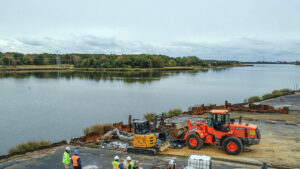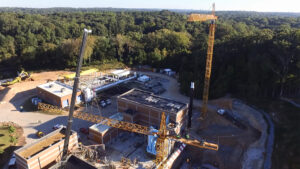The Integrated Project Delivery or Collaborative Delivery acronym soup is daunting: CMAR, GCCM, CMGC, PDB, FPDB, DBO, DBOF, DBFOMR, P3, PPP… Well, you get the picture. String a few letters together and there’s a delivery model to match!
This extreme fragmentation and segmentation is a critical challenge in the current Collaborative Delivery world. How do you figure out what’s best for your project?
The answer is to use this variety of options to your advantage.
When I was a kid, I had a huge tub of Lego pieces. In building my perfect project, I would dig through the tub, scrounging for an exact block. Need a blue, six-by-two with a white flat cap to top off my slightly lop-sided re-creation of Dodger Stadium? Keep digging: finding that piece of perfect plastic at the bottom of the bin was part of the satisfaction of a job well-built.
For actual infrastructure owners, the solution is to use the Lego world of collaborative delivery options to your advantage. There has never been a better time in the water and wastewater sector to design and build a project with exactly the right color and shape of blocks.
So, consider taking these steps:
- Step 1: Figure out what you really want and need. Every utility has a unique set of issues, needs, and constraints. Spend the time up front to really discuss and then document your priorities and needs. You don’t need to worry about the delivery model at this point because, by starting with your unique set of requirements, you’ll define your project first so you can match it to a specific delivery approach later.
- Step 2: Align your priorities with the available options. Since you’ve now identified what’s important, you can now align your project’s components with the letters in all those acronyms in the first paragraph. Need control of design to support permitting? Add a ‘P’ from Progressive Design-Build. Tired of unpredictable operating expenses or high lifecycle costs? Add an ‘O’ from design-build-operate. Need some privately-sourced capital to confirm feasibility and jump-start a new idea? Add one of the ‘Ps’ from Public-Private-Partnerships. If you do this right, you’ll end up with your own customized acronym. (Be sure to let us know, so that we can add it to the alphabet soup menu!)
- Step 3: Be fearless don’t worry about whether it’s been done before. This is the hardest part. If you truly line up your unique project with the diversity of options available to you, you will end up with a new Collaborative Delivery combination. It won’t look exactly like what has been done elsewhere. Your procurement and legal team will be worried, but don’t be afraid. Virtually every component of your approach will have a specific, successful precedent.
And this is where we come back to the Lego bin. You know your needs and you know what various elements of the Collaborative Delivery spectrum are available to build your success. The right Lego piece is definitely in the bin and organizations like the Water Design-Build Council, the Design-Build Institute of America and experienced design-builders can help you find the right size and color building block to complete your vision:
- Seek out “where has this been done before?” WDBC membership has delivered thousands of projects using every conceivable Collaborative Delivery method. Learn from owners who have already set a precedent and leverage legitimate research to help you make your case.
- Make use of procurement guides. WDBC has full templates for CMAR, Progressive Design-Build, and (coming soon) Fixed Price Design-Build procurements. There’s nothing that says you can’t mix, match and combine them all for a customized, project specific solution a bin of Collaborative Delivery Lego pieces for your use.
- Reinforce your delivery approach with training and insight. What you want to do certainly has been done before in some shape and form. WDBC can train your staff on the specifics while simultaneously making our membership’s collective experience available for your use.
Despite the alphabet soup, it’s to your benefit that all of these delivery models exist. Imagine a Lego bin full of white blocks of all the same size. What’s the fun in that? With a bit of digging in our Collaborative Delivery bin, you can build anything you want.
P.S., Lego geek note: it’s “Lego” without an ‘s’ at the end. It’s a copyrighted brand name and that’s the right way to say it.
__________
This article was originally published on the Water Design-Build Council blog. You can view more posts from WDBC here.







